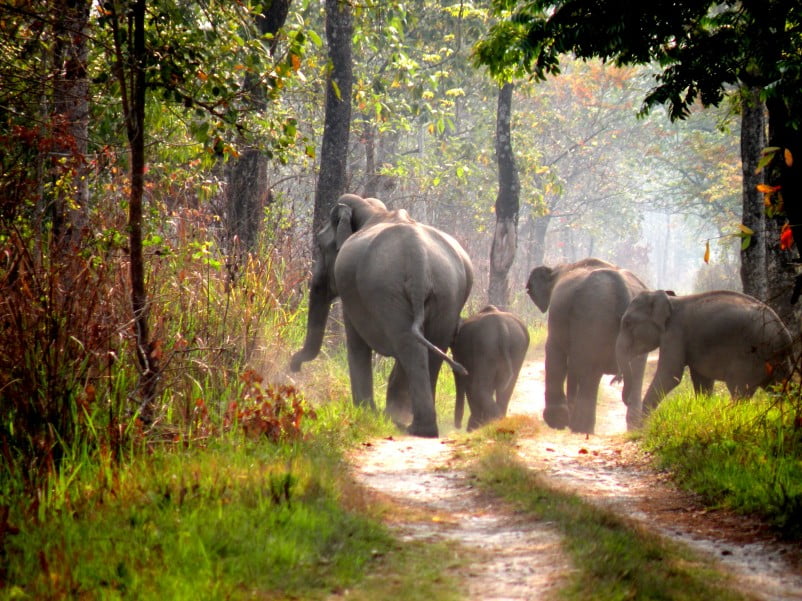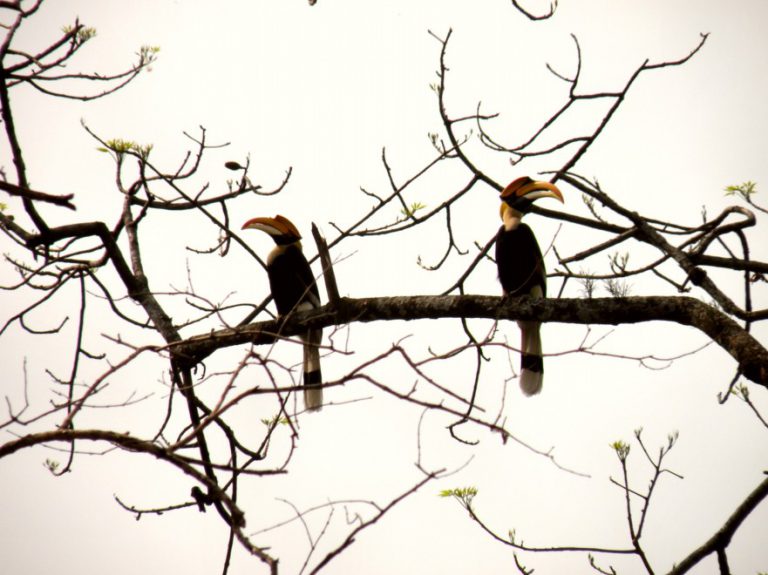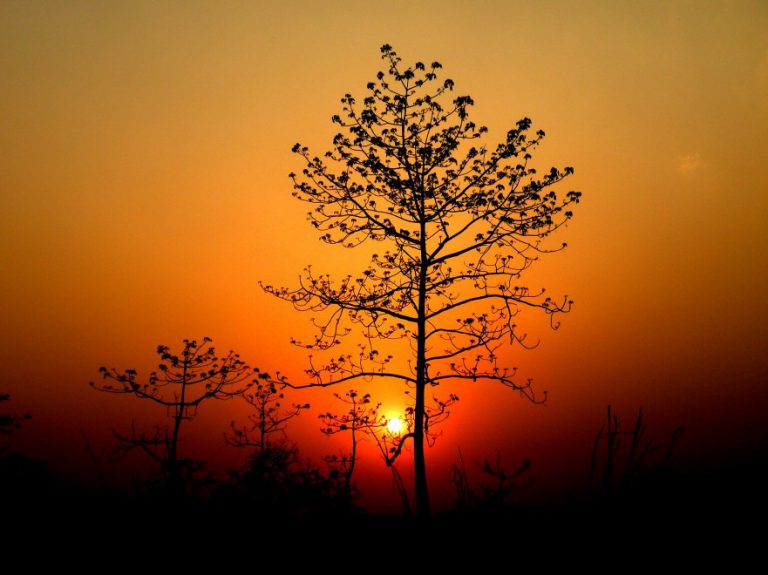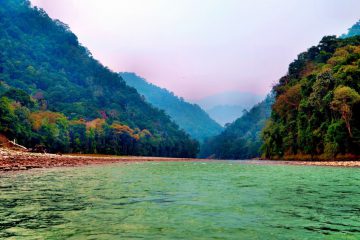MANAS NATIONAL PARK –ASSAM
Published by Editor on
Manas National Park –ASSAM

Manas National Park is the India’s second largest tiger population & declared World Heritage site by UNESCO. Manas has one of the richest biodiversity areas in the world. Manas is like a Paradise for birdwatchers and ornithologists, as one can get opportunity to view the most endangered and migratory birds. This is one of the beauteous national parks of India. Sprawling over an area of 391 sq km, Manas national park is situated in the Himalayan foothills on Indo-Bhutan borders. The forest has crossed the borders beyond Indian territories to the Himalayan kingdom of Bhutan, with the crystal waters of the Manas River demarcating the International border. As you proceed further into the forest you will be welcomed by the sweet melody of some of your favorite bird species.
Reaching Manas National Park:
If you are reaching the Manas National Park by Railways, then you need to move to Barpeta. Barpeta Road is the nearest railhead which is 40 kms away from the Park. Howrah is connected through daily train 15959 KAMRUP EXPRESS (17:35). From there you need to take a car to reach national park.
Where to stay:
- Mathanguri upper Bungalow is the best place to stay.
- Bansbari Lodge (contact- Tel. +91 361 2602223/2602186)
Whom to contact for permit and accommodation at Mathanguri upper Bungalow:
Field Director, Project Tiger – Manas,
Manas Tiger Reserve,
P.O. – Barpeta Road,
Dist. – Barpeta,
Assam – 781315
INDIA
Phone Number: 03666-261413
Major Attractions of Manas National Park:
Manas National Park is famous for Tigers, leopards, elephants, wild buffaloes, one-horned Rhino, Red Panda, Pigmy Hog, Golden Langur, Gaurs, Barking Deer, Hog Deer, Sambar ,Chital etc. Out of 380 species of birds which are recorded here,the most important is the endangered Bengal Florican as the population here is more than anywhere else. Jungle Fowls, bulbuls, Brahminy Ducks, Gray hornbills are few other birds that are commonly sighted in Manas national Park.
Activities You Can Take Part In Manas National Park:
Nature Walks: You can take a nature walk along a 5-km long trail by the river around Mathanguri. On your walk, you will see a large number of birds and flowers. You will be accompanied by forest guards and a naturalist. Your guide may also take you along the water streams to spot the wild animals, which is a wonderful and unique experience.
Jeep Safari: Jeep Safari is one of the best way to explore the Manas National Park. Watching the wild animals from open-roof jeep is a thrilling experience and during you trip, you can also click some photographs. You can undertake jeep safari either in your own vehicle or in a hired one.
Elephant Rides: Elephant rides are offered in the grasslands close to the park gate and also at Mathanguri. In comparison to jeep safari, elephant rides are more enjoyable. Rides on the elephant back provide you a nice opportunity to get a close look of the wildlife. Those interested should inform the host at the Lodge the previous evening so that an elephant ride can be arranged.
Night Safari: Night Safar is also organized at Manas. Using powerful binoculars with night vision facilities to view the wildlife attractions of the park can be an unforgettable experience.
Boat Rides: The Forest Department offer the boating facility (8-seater boat) in the river. A boat ride on Manas river, commencing at Mathanguri and ending around 35km away from where one is picked up by pre-arranged transport. While boating through the river, you can observe the wild animals.
Climate of Manas National Park:
During the day October and April months are quite warm but evenings are pleasant. One or two showers are normal during these months particularly April. November, December, January and February months are cold when temperature drops to single digit particularly at night. One needs warm coats/jackets and pullovers after sunsets. During the day however, temperature hovers around 18 degrees Celsius.
Best time to visit:
Tourist season runs from October through till end of April. However, the best time to visit the park is between February and March. The park closes during the monsoon season.
Tourist tips:
Book your accommodation well before.
Must take a nature walk along with Mr. Subhas Narzary – the best naturalist and forest guard of the park.
Pay the entry fee at the Bansbari Range Office, 1 km before the entry gate.
Nature walk at Panbari and Bhuyanpara ranges is considered dangerous, especially without an armed escort. The Makibana area in Bhuyan Para range is considered good for Tiger sighting.
Kuri bill range is considered good for sighting critically endangered bird Bengal Florican.
Park timings are 5:30 AM to 6:30 PM.
Mobile network is extremely poor inside the park.
Electricity available inside the park only in-between 6 P.M to 10 P.M through generator.













0 Comments